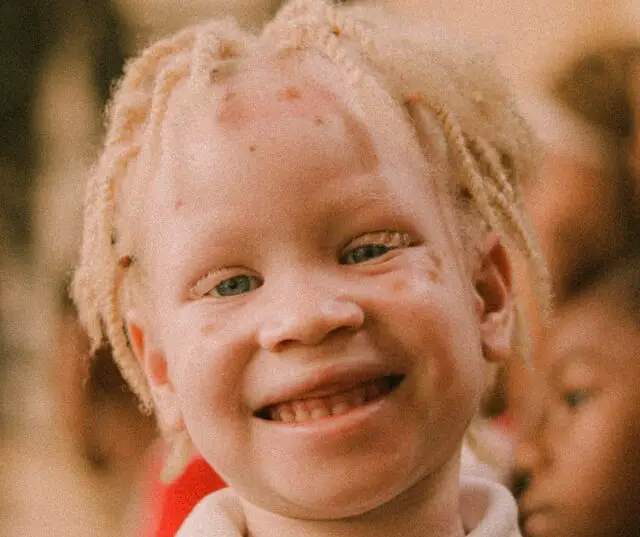Albinism is a genetic disorder that affects the skin, hair, and eyes. It is caused by a lack or reduction of melanin pigment in these areas due to genetic mutations. The presence of melanin in these tissues is responsible for their color. The melanin pigment is produced by cells called melanocytes located in the skin, hair follicles, and eyes. Mutations in genes that regulate the production of melanin lead to the reduction or absence of melanin in these tissues.

The two main types of albinism are oculocutaneous albinism (OCA) and ocular albinism (OA). OCA affects the skin, hair, and eyes, while OA primarily affects the eyes. There are several subtypes of OCA, each caused by mutations in different genes.
While there is no opposite of albinism, some genetic variations can cause different pigmentation patterns than those seen in albinism. One such condition is piebaldism, which can cause patches of white skin and hair mixed with normally pigmented skin and hair. Piebaldism is caused by mutations in the KIT gene that disrupt the normal migration of melanocytes during embryonic development.
Another genetic condition that can cause unusual pigmentation patterns is Waardenburg syndrome. This group of genetic conditions is characterized by hearing loss and unusual pigmentation of the skin, hair, and eyes. There are several subtypes of Waardenburg syndrome, each caused by mutations in different genes.
In Waardenburg syndrome, mutations in genes that regulate the development and migration of melanocytes can cause unusual pigmentation patterns. For example, some individuals with Waardenburg syndrome may have a patch of white hair at the front of their scalp or heterochromia, a condition in which the irises of the eyes are different colors.
While these conditions can cause different pigmentation patterns than those seen in albinism, they are not considered the opposite of albinism. Albinism is a specific genetic disorder caused by mutations in genes that regulate melanin production. Piebaldism and Waardenburg syndrome are genetic conditions that can cause unusual pigmentation patterns but do not involve the same genes as albinism.
In conclusion, while there is no opposite of albinism, genetic variations can cause different pigmentation patterns than those seen in albinism. Piebaldism and Waardenburg syndrome are two genetic conditions that can cause unusual pigmentation patterns but are not considered the opposite of albinism. Albinism is a rare genetic disorder caused by mutations in genes that regulate melanin production and can have significant impacts on an individual’s health and well-being.